Photo

“A state of inner readiness and waiting. I’m open to all annunciations.”
~ Anna Kamieńska
[Annunciation, by Giotto]
• During the Nazi occupation of Poland, Anna Kamieńska (1920–1986) taught at various underground schools in and around Lublin, where she spent her formative years. After graduating from college, she studied Classical Philology at the University of Łódź and went on to marry the poet Jan Śpiewak in 1948. The two collaborated on translations of Russian poetry and drama until Śpiewak’s sudden death from cancer in 1967. More: https://www.the-tls.co.uk/articles/poem-week-thanking/
• An artist who played a decisive role in the development of Italian painting in his century and beyond... His earliest works, such as the painted crucifix in Santa Maria Novella and the Maestà formerly in San Giorgio alla Costa and now in the Museo Diocesano, both in Florence, and especially his biblical frescoes in the upper church of the basilica of San Francesco at Assisi, reveal the strong influence of the Roman school, both contemporary and classical.
9 notes
·
View notes
Photo
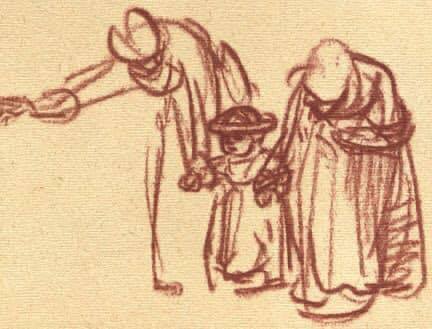
Happy Birthday, John Steinbeck!
“The direction of a big act will warp history, but probably all acts do the same in their degree, down to a stone stepped over in a path or a breath caught at sight of a pretty girl or a fingernail nicked in the garden soil.”
~ John Steinbeck, East of Eden
[First Steps, Rembrandt]
• John Steinbeck (1902-1968), born in Salinas, California, came from a family of moderate means. He worked his way through college at Stanford University but never graduated. In 1925 he went to New York, where he tried for a few years to establish himself as a free-lance writer, but he failed and returned to California. More: https://www.nobelprize.org/.../1962/steinbeck/biographical/
• A prolific painter, draftsman, and etcher, Rembrandt van Rijn is usually regarded as the greatest artist of Holland’s “Golden Age.” He worked first in his native Leiden and, from 1632 onward, in Amsterdam, where he had studied briefly (ca. 1624) with the influential history painter Pieter Lastman. More: https://www.metmuseum.org/toah/hd/rmbt/hd_rmbt.htm
2 notes
·
View notes
Photo

“Those who live small, mate small, die small. It’s the reductionist approach to life: if you keep it small, you’ll keep it under control. If you don’t make any noise, the bogeyman won’t find you. But it’s all an illusion, because they die too, those people who roll up their spirits into tiny little balls so as to be safe. Safe?! From what? Life is always on the edge of death; narrow streets lead to the same place as wide avenues, and a little candle burns itself out just like a flaming torch does. I choose my own way to burn.”
—Sophie Scholl
SOPHIE SCHOLL was found guilty of treason in Nazi Germany and beheaded on Feb. 22, 1943. She was a member of the White Rose, a nonviolent resistance group of university students who undermined the Nazis by defying censorship laws with graffiti and leaflet distribution. Sophie was caught, arrested, and, just hours later, led to the guillotine. The 21-year-old remained poised and courageous. Her last words were, “Such a fine, sunny day, and I have to go, but what does my death matter, if through us, thousands of people are awakened and stirred to action?”
45 notes
·
View notes
Photo
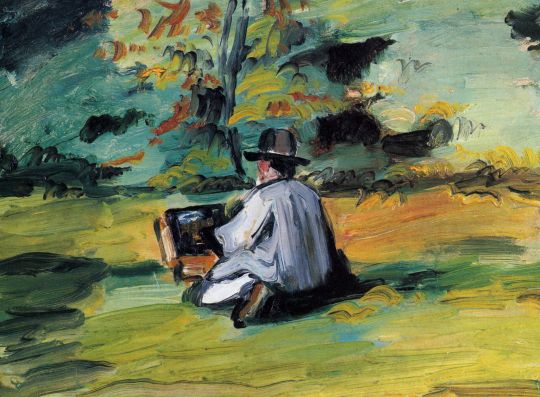
“The artist is nothing without the gift, but the gift is nothing without work.”
– Émile Zola
[Painter at Work, Paul Cézanne]
• Émile Zola (1840-1902), French activist, critic, and author of many works influential in the naturalism literary school including his series of twenty novels written between 1871 and 1893 that follow the Rougon Macquart family starting with The Fortune of the Rougons (1871). More: http://www.online-literature.com/emile-zola/
• Paul Cézanne (1839-1906) is known as both a French impressionist and one of the founders of modern art. He worked during a time when concept of painting out in the air in natural light was just becoming popular. More: http://www.thefamousartists.com/paul-cezanne/painter-at-work
#paul cezanne#painting#work#art#emile zola#discipline#practice#gift#talent#writing#advice#get to work
3 notes
·
View notes
Photo

“True artists above all are ready to acknowledge their limits.”
— Pope St. John Paul II
[Tadeusz Gorecki, Humility]
• Pope John Paul II ... proclaimed the Year of Redemption, the Marian Year and the Year of the Eucharist as well as the Great Jubilee Year of 2000, in order to provide the People of God with particularly intense spiritual experiences. He also attracted young people by beginning the celebration of World Youth Day. More: http://www.vatican.va/content/john-paul-ii/en/biografia/documents/hf_jp-ii_spe_20190722_biografia.html
• Religious themes prevail in his works; religious ceremonies and rituals are often depicted in the background of a domestic life. T. Gorecki had painted lots of portraits. His works are characterized by expressive drawings, bright colours, and certain theatricality of the composition. More: https://lithuanianart.com/authors/137
2 notes
·
View notes
Photo

"The concept which assumes that everything in the Church is irrevocably set for all times appears to me to be a false one. It would be naive to disregard that the Church has a history; the Church is a human institution and like all things human, was destined to change and evolve…"
– St. Edith Stein
[Church in the Wild, by Jammie Holmes]
• Edith Stein (1891–1942) was a realist phenomenologist associated with the Göttingen school and later a Christian metaphysician. She was a Jew who converted to Catholicism in 1922 and was ordained a Carmelite nun in 1933. She died in Auschwitz in 1942. More: https://plato.stanford.edu/entries/stein/
• Born in Thibodaux, Louisiana, a small city 45 minutes from New Orleans Louisiana, Jammie Holmes now lives in Dallas, Texas where he has created an impressive body of work. His paintings are raw with emotions and provide the viewer with an inside look into Holmes’ complex mind. His pieces touch on religious, political and contemporary issues. More: https://www.bandofvices.com/jammie-holmes
#jammie holmes#church#edith stein#saints#change#human institution#evolve#teresa benedicta#painting#black lives matter#blm#emotion
9 notes
·
View notes
Photo
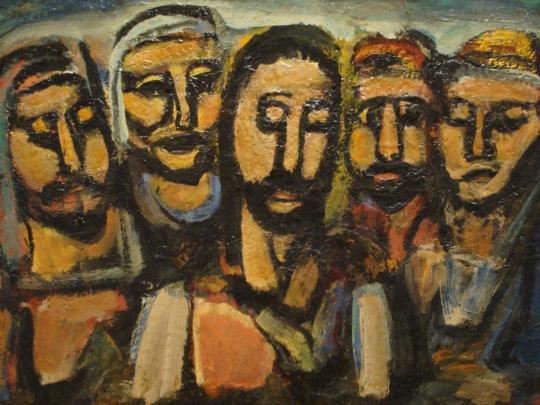
“We cannot be too gentle, too kind. Shun even to appear harsh in your treatment of each other. Joy, radiant joy, streams from the face of one who gives and kindles joy in the heart of one who receives. All condemnation is from the devil. Never condemn each other, not even those whom you catch committing an evil deed. We condemn others only because we shun knowing ourselves. When we gaze at our own failings, we see such a morass of filth that nothing in another can equal it. That is why we turn away, and make much of the faults of others. Keep away from the spilling of speech. Instead of condemning others, strive to reach inner peace. Keep silent, refrain from judgement. This will raise you above the deadly arrows of slander, insult, outrage, and will shield your glowing hearts against the evil that creeps around.”
– Seraphim of Sarov
[Christ and the Disciples, Georges Rouault]
• Now only the birds and the wild beasts visited him, and he dwelt with them as Adam did in Paradise. They came at midnight and waited for him to complete his Rule of prayer. Then he would feed bears, lynxes, foxes, rabbits, and even wolves with bread from his hand. Saint Seraphim also had a bear which would obey him and run errands for him. More: https://www.oca.org/saints/lives/2021/01/02/100008-repose-of-venerable-seraphim-wonderworker-of-sarov
• Georges Rouault was a French artist whose work melded Fauvism and Expressionism with its jewel-like tones and bold graphic lines. Alongside Henri Matisse, André Derain, Rouault culled from his spiritual fervor and knowledge of medieval stained glass to produce resonating portraits, landscapes, religious scenes, and still lifes. More: http://www.artnet.com/artists/georges-rouault/
#georges rouault#fauvism#expressionism#spiritual painting#christ#seraphim of sarov#saints#wisdom#gentleness#radiant joy#projection#the accuser#love#gossip#christ and disciples
5 notes
·
View notes
Photo

“The most solid advice for a writer is this, I think: Try to learn to breathe deeply, really to taste food when you eat, and when you sleep really to sleep. Try as much as possible to be wholly alive with all your might, and when you laugh, laugh like hell. And when you get angry, get good and angry. Try to be alive. You will be dead soon enough.”
~ Ernest Hemingway
[Untitled - Shah Bibi Tarakhail with Davyd Whaley]
• During the twenties, Hemingway became a member of the group of expatriate Americans in Paris, which he described in his first important work, The Sun Also Rises (1926). Equally successful was A Farewell to Arms (1929), the study of an American ambulance officer’s disillusionment in the war and his role as a deserter. Hemingway used his experiences as a reporter during the civil war in Spain as the background for his most ambitious novel, For Whom the Bell Tolls (1940). Among his later works, the most outstanding is the short novel, The Old Man and the Sea (1952), the story of an old fisherman’s journey, his long and lonely struggle with a fish and the sea, and his victory in defeat. More: https://www.nobelprize.org/prizes/literature/1954/hemingway/biographical/
• The doctors and therapists who worked with a little girl from Afghanistan knew the prosthetic arm they gave her would change her life. What they didn’t anticipate was that within weeks of strapping on her new limb, 7-year-old Shah Bibi Tarakhail would be using it to pick up a brush and begin carving out a new life – of abstract painting. More: https://canadianinquirer.net/v1/2014/04/03/afghan-girl-who-lost-arm-paints-with-prosthetic-and-wins-praise-from-artist-davyd-whaley/
#nobel prize#literature#fiction#ernest hemingway#shah bibi tarakhail#davyd whaley#abstract art#expressionism#writing#advice#life#wholly alive#be alive#prosthesis#children
0 notes
Photo
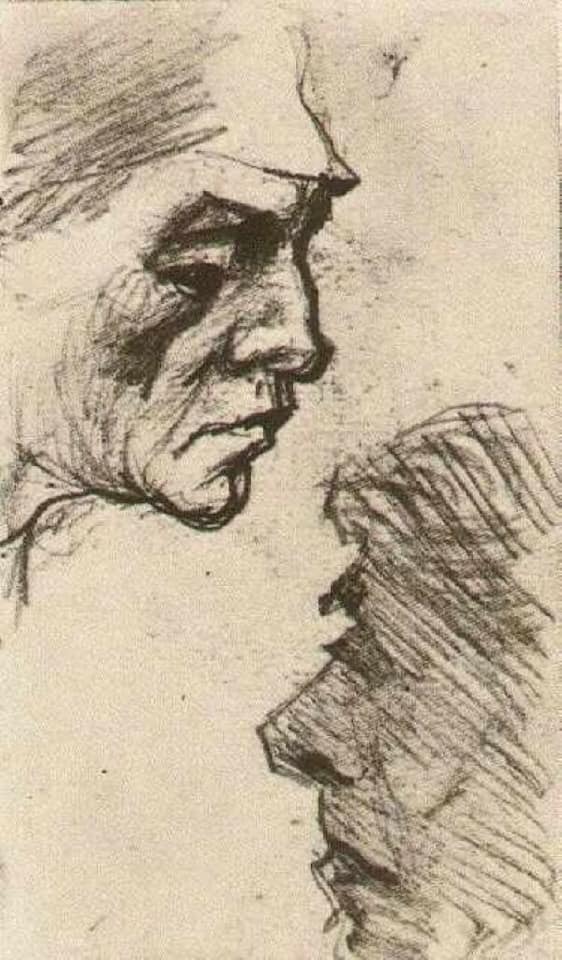
“We always find that those who walked closest to Christ were those who had to bear the greatest trials.”
~St. Teresa of Avila
[Two Heads of Men, Vincent Van Gogh]
• Teresa lived in an age of exploration as well as political, social, and religious upheaval. It was the 16th century, a time of turmoil and reform. She was born before the Protestant Reformation and died almost 20 years after the closing of the Council of Trent. More: https://www.franciscanmedia.org/saint-of-the-day/saint-teresa-of-avila
• Generally overshadowed by the fame and familiarity of his paintings, Vincent van Gogh’s more than 1,100 drawings remain comparatively unknown, although they are among his most ingenious and striking creations. Van Gogh engaged drawing and painting in a rich dialogue, which enabled him to fully realize the creative potential of both means of expression. More: https://www.metmuseum.org/toah/hd/gogh_d/hd_gogh_d.htm
12 notes
·
View notes
Photo
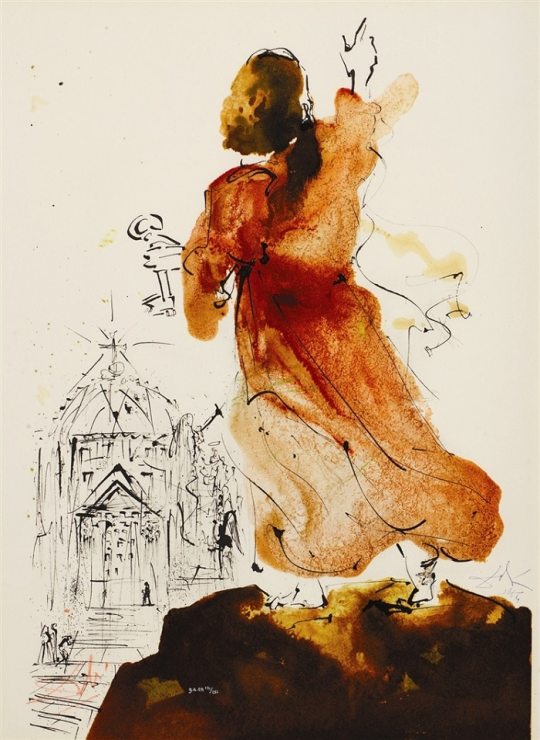
"I understand those who prefer a more rigorous pastoral care which leaves no room for confusion. But I sincerely believe that Jesus wants a Church attentive to the goodness which the Holy Spirit sows in the midst of human weakness, a Mother who, while clearly expressing her objective teaching, always does what good she can, even if in the process, her shoes get soiled by the mud of the street.' Jesus 'expects us to stop looking for those personal or communal niches which shelter us from the maelstrom of human misfortune, and instead to enter into the reality of other people’s lives and to know the power of tenderness. Whenever we do so, our lives become wonderfully complicated.'"
- Pope Francis
[”Tu es Petrus,” Biblia Sacra by Salvador Dali]
• The first Pope of the Americas Jorge Mario Bergoglio hails from Argentina. The 76-year-old Jesuit Archbishop of Buenos Aires is a prominent figure throughout the continent, yet remains a simple pastor who is deeply loved by his diocese, throughout which he has travelled extensively on the underground and by bus during the 15 years of his episcopal ministry. More: http://www.vatican.va/content/francesco/en/biography/documents/papa-francesco-biografia-bergoglio.html
• In 1963, Salvador Dalí—an internationally known artist and favorite of both the avant-garde art world and the media—turned his attention and energies to the endlessly rich subject matter offered by the Holy Bible (especially the Old Testament). The catalyst that permitted the artistic genius Dalí and The Book to create one hundred and five stunning and compelling images was Giuseppe Albaretto. More: https://www.parkwestgallery.com/history-salvador-dali-biblia-sacra/
#st peter#salvador dali#watercolor#sacra biblia#holy bible#illustration#pope francis#tenderness#mission#jesus#saints#painting#complicated
0 notes
Photo

"Humanity i love you because you are perpetually putting the
secret of life in your pants and forgetting it's there and sitting
down on it"
– E.E. Cummings
[Mauve Intersection, Mark Rothko]
• As one of the most innovative poets of his time, Cummings experimented with poetic form and language to create a distinct personal style. A typical Cummings poem is spare and precise, employing a few key words eccentrically placed on the page. Some of these words were invented by Cummings, often by combining two common words into a new synthesis. More: https://www.poetryfoundation.org/poets/e-e-cummings
• One of the preeminent artists of his generation, Mark Rothko is closely identified with the New York school, a circle of painters that emerged during the 1940s as a new collective voice in American art. During a career that spanned five decades, he created a new and impassioned form of abstract painting. More: https://www.nga.gov/features/mark-rothko.html
0 notes
Photo

"I do not agree with a big way of doing things. What matters is the individual. If we wait till we get numbers, then we will be lost in the numbers and we will never be able to show that love and respect for the person."
– St. Mother Teresa
[Personage, Karel Appel]
• On October 7, 1950, Mother Teresa received permission from the Holy See to start her own order, “The Missionaries of Charity”, whose primary task was to love and care for those persons nobody was prepared to look after. In 1965 the Society became an International Religious Family by a decree of Pope Paul VI. More: https://www.nobelprize.org/prizes/peace/1979/teresa/biographical/
• In 1948, Appel, along with fellow artists living and working in Copenhagen, Brussels and Amsterdam, founded the expressionist collective, Cobra, based on the names of the three cities. Faithfully an avant-garde movement, Cobra members were inspired by folk art, children’s creativity, and primitivism. Because of their use of bright colors and expressive brushstrokes, Cobra is often noted as a precursor to the American abstract expressionist movement. More: https://www.caviar20.com/products/karel-appel-personage-painting-1965
#karel apple#cobra#avant-garde#expressionism#painting#mother teresa#saints#small#littleness#love#respect#person#individual
11 notes
·
View notes
Photo

“I think it is all a matter of love; the more you love a memory the stronger and stranger it becomes.”
— Vladimir Nabokov
[Moonlit Night, Isaac Levitan]
• Vladimir Nabokov lives with his wife Véra in the Montreux Palace Hotel in Montreux, Switzerland, a resort city on Lake Geneva which was a favorite of Russian aristocrats of the last century. They dwell in a connected series of hotel rooms that, like their houses and apartments in the United States, seem impermanent, places of exile. Their rooms include one used for visits by their son Dmitri, and another, the chambre de debarras, where various items are deposited—Turkish and Japanese editions of Lolita, other books, sporting equipment, an American flag. More: https://www.theparisreview.org/interviews/4310/the-art-of-fiction-no-40-vladimir-nabokov
• One thing you will notice about Levitan's landscape paintings is how diverse they are in terms of style and subject. His academic training allowed him to be such a versatile painter and, like many of the other Russian masters, it appears he was not timid about experimenting with his style and technique. Some paintings are delicately rendered and realistic, whilst others are bold and impressionistic. More: https://drawpaintacademy.com/isaac-levitan/
#vladimir nabokov#nabokov#memory#love#isaac levitan#russian painting#landscape painting#literature#stranger
5 notes
·
View notes
Photo

“The only true and effective ‘operator’s manual for spaceship earth’ is not a book that any human will ever write; it is hundreds of thousands of local cultures.”
~ Wendell Berry
[Landscape of Havana, 1969 - René Portocarrero]
• Poet, novelist, and environmentalist Wendell Berry lives in Port Royal, Kentucky near his birthplace, where he has maintained a farm for over 40 years. Mistrustful of technology, he holds deep reverence for the land and is a staunch defender of agrarian values. He is the author of over 50 books of poetry, fiction, and essays. His poetry celebrates the holiness of life and everyday miracles often taken for granted. More: https://www.poetryfoundation.org/poets/wendell-berry
• A large part of Portocarrero’s work deals with Spanish colonial subjects and Spanish-Cuban interiors. The search for national and tropical elements is superimposed on the baroque undercurrent which in large measure defines his work. ... Also important is the series ... of cathedrals: through a long evolution, buildings and cathedrals are combined in cityscapes which developed into the central theme of the artist’s work. More: https://panamericanart.com/artist/rene-portocarrero/
#rene portocarrero#cuban art#pan american art#painting#havana#cuba#wendell berry#poet#local culture#culture
2 notes
·
View notes
Photo

“If water derives lucidity from stillness, how much more the faculties of the mind! The mind of the sage, being in repose, becomes the mirror of the universe, the speculum of all creation.”
~ Chuang Tzu
[Water Lilies, 1917 - 1919 - Claude Monet]
• Zhuangzi (Chuang-tzu 莊子 “Master Zhuang” late 4th century BC) is the pivotal figure in Classical Philosophical Daoism. The Zhuangzi is a compilation of his and others’ writings at the pinnacle of the philosophically subtle Classical period in China (5th–3rd century BC). The period was marked by humanist and naturalist reflections on normativity shaped by the metaphor of a dào—a social or a natural path. More: https://plato.stanford.edu/entries/zhuangzi/
• “One instant, one aspect of nature contains it all,” said Claude Monet, referring to his late masterpieces, the water landscapes that he produced at his home in Giverny between 1897 and his death in 1926. More: https://www.artic.edu/artworks/16568/water-lilies
#claude monet#impressionism#waterlilies#water lilies#light#chuang tzu#zhuang zhou#zhuangzi#daoism#taoism#giverny#mirror of the universe#speculum of creation#painting#french painters
10 notes
·
View notes
Photo
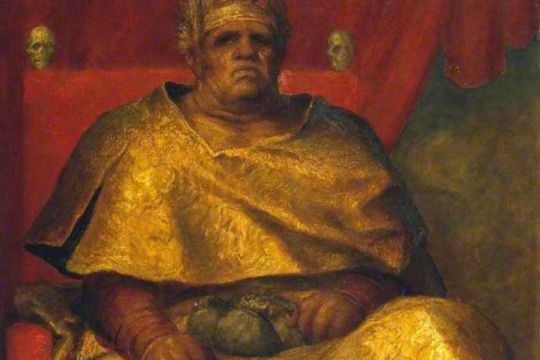
“When we start deceiving ourselves into thinking not that we want something… but that it is a moral imperative that we have it, that is when we join the fashionable mad men.”
– Joan Didion
[Mammon, George Frederick Watts]
• Generally, writers who hold readers’ imaginations across decades do so because there’s something unsolved in their project, something that doesn’t square and thus seems subject to the realm of magic. In Joan Didion’s case, a disconnect appears between the jobber-like shape of her writing life—a shape she often emphasizes in descriptions of her working habits—and the forms that emerged as the work accrued. For all her success, Didion was seventy before she finished a nonfiction book that was not drawn from newsstand-magazine assignments. She and Dunne started doing that work with an eye to covering the bills, and then a little more. (Their Post rates allowed them to rent a tumbledown Hollywood mansion, buy a banana-colored Corvette Stingray, raise a child, and dine well.) And yet the mosaic-like nonfiction books that Didion produced are the opposite of jobber books, or market-pitched books, or even useful, fibrous, admirably executed books. These are strange books, unusually shaped. They changed the way that journalistic storytelling and analysis were done. More: https://www.google.com/amp/s/www.newyorker.com/magazine/2021/02/01/what-we-get-wrong-about-joan-didion/amp
• Watts, in common with such social commentators as William Morris, Ruskin and Carlyle, began to question the benefits and purpose of modern industry and commerce and their dehumanising effects. In 1880 he wrote, 'Material prosperity has become our real god, but we are surprised to find that the worship of this visible deity does not make us happy.' (G.F. Watts, 'The Present Conditions of Art'). Four years later he decided to personify this so-called deity - the evil 'Mammon' - in paint. More: https://www.tate.org.uk/art/artworks/watts-mammon-n01630
#george frederic watts#symbolist#mammon#mad men joan didion#deception#writing#cultural commentary#criticism#evil#painting
4 notes
·
View notes
Photo
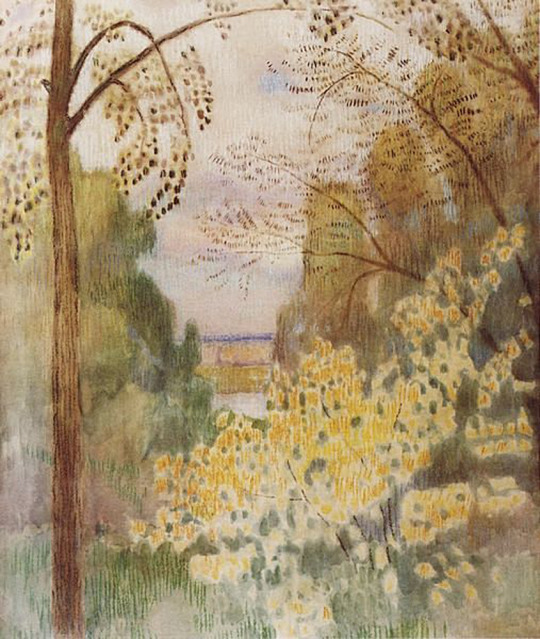
Lost in the forest
by Pablo Neruda
Lost in the forest, I broke off a dark twig
and lifted its whisper to my thirsty lips:
maybe it was the voice of the rain crying,
a cracked bell, or a torn heart.
Something from far off it seemed
deep and secret to me, hidden by the earth,
a shout muffled by huge autumns,
by the moist half-open darkness of the leaves.
Wakening from the dreaming forest there, the hazel-sprig
sang under my tongue, its drifting fragrance
climbed up through my conscious mind
as if suddenly the roots I had left behind
cried out to me, the land I had lost with my childhood--
and I stopped, wounded by the wandering scent.
[Hazel Bush, by Victor Borisov-Musatov]
• from Neruda’s Nobel Acceptance Speech: “From all this, my friends, there arises an insight which the poet must learn through other people. There is no insurmountable solitude. All paths lead to the same goal: to convey to others what we are...” More: https://www.nobelprize.org/prizes/literature/1971/neruda/lecture/
• Born Victor Elpidiforovich Musatov in 1870 in Saratov, a city on the Volga River upstream of Volgograd, his family had humble origins. At the age of 14 he entered the local ‘real school’, where his artistic talent was spotted. From there he went to study in the Moscow School of Painting, Sculpture and Architecture at the age of 20, and the following year to the Imperial Academy of Arts in Saint Petersburg, the pinnacle of teaching at the time in Russia. More: https://eclecticlight.co/2020/04/03/agaves-and-the-country-estate-paintings-of-victor-borisov-musatov/
#nobel prize#literature#pablo neruda#poetry#poet#victor borisov-musatov#pastel#art#russian artists#chilean poetry
3 notes
·
View notes